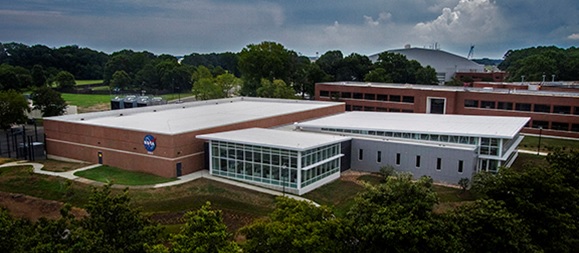By Terry Beuthling, PE, CVS
The NASA Langley Research Center in Virginia (NASA LaRC) recently celebrated the opening of the Katherine G. Johnson Computational Research Facility – named for a mathematician whose calculations helped put the first Americans in orbit and onto the moon.

The new building “sets the stage for our continuing digital transformation in an exciting new era of sophisticated modeling and simulation,” David Bowles, Langley’s director, said during the ribbon cutting. “We know that these are the tools that will help us shape the world of the future, just as Langley’s wind tunnels have helped shape nearly every aircraft that’s in the skies flying today.”
HNTB’s Role in Project Development
“During the fall of 2013, HNTB received a call for assistance from the US Army Corps of Engineers through our prime consultant, Guernsey Tingle Architects,” recalled Terry Beuthling, certified value specialist. USACE had been designated as the project managers on NASA’s new combined computer facility at the Langley Research Center.
“Computer technology was advancing rapidly, and existing NASA computer facilities were undersized and overworked,” Beuthling said. Recent projects had included modeling the Martian atmosphere to design landing techniques for planetary rovers. A recent plan to consolidate three of the facilities into an existing building could not accommodate new equipment and provide room for future expansion.
But there was another reason for the call – senior NASA management had decided to advance several missions by two years, and rehabilitating an existing building would not meet their schedule. “They asked if HNTB could assist the architect in conducting a value engineering/architectural programming workshop to establish the scope for the design-build project on a vacant parcel at the center,” Beuthling said.
The workshop was scheduled for the first week of October, and 30 team members from USACE, NASA LaRC, NASA Marshall Space Flight Center, Guernsey Tingle, and HNTB convened at the research center – some in person and some digitally.
“The fall of 2013 was also a time of financial challenges for our country, and Congress could not agree on a budget to fund all the agencies and programs,” Beuthling explained. “As a result, the government was shut down for two weeks after two days of the VE workshop.”
The workshop reconvened in late November and offered the following results for consideration by USACE and NASA:
- 41 ideas generated
- 15 technical recommendations
- 19 RFP suggestions for the design build contract
- $1.27M recommended reduction in costs to meet anticipated budget
- Reduction in size to meet anticipated needs
The value engineering study was unique in several ways:
- There were no existing plans for the new building on the new site – the VE commenced with scoping the project.
- The design-build contract was outlined but not finalized. There were no typical design-bid-build specifications.
- The large VE team split into work groups addressing the functions, goals and objectives of each different system.
- The workshop was interrupted by the unplanned government shutdown.
The recommendations were analyzed and implemented, a contractor selected, and the computer center constructed on the triangular parcel at Langley Research Center.
“It was an honor to have played a part in assisting NASA and USACE with the design of a unique building and the recognition of a truly great American,” Beuthling said.
You can watch a video tour of the facility here.
